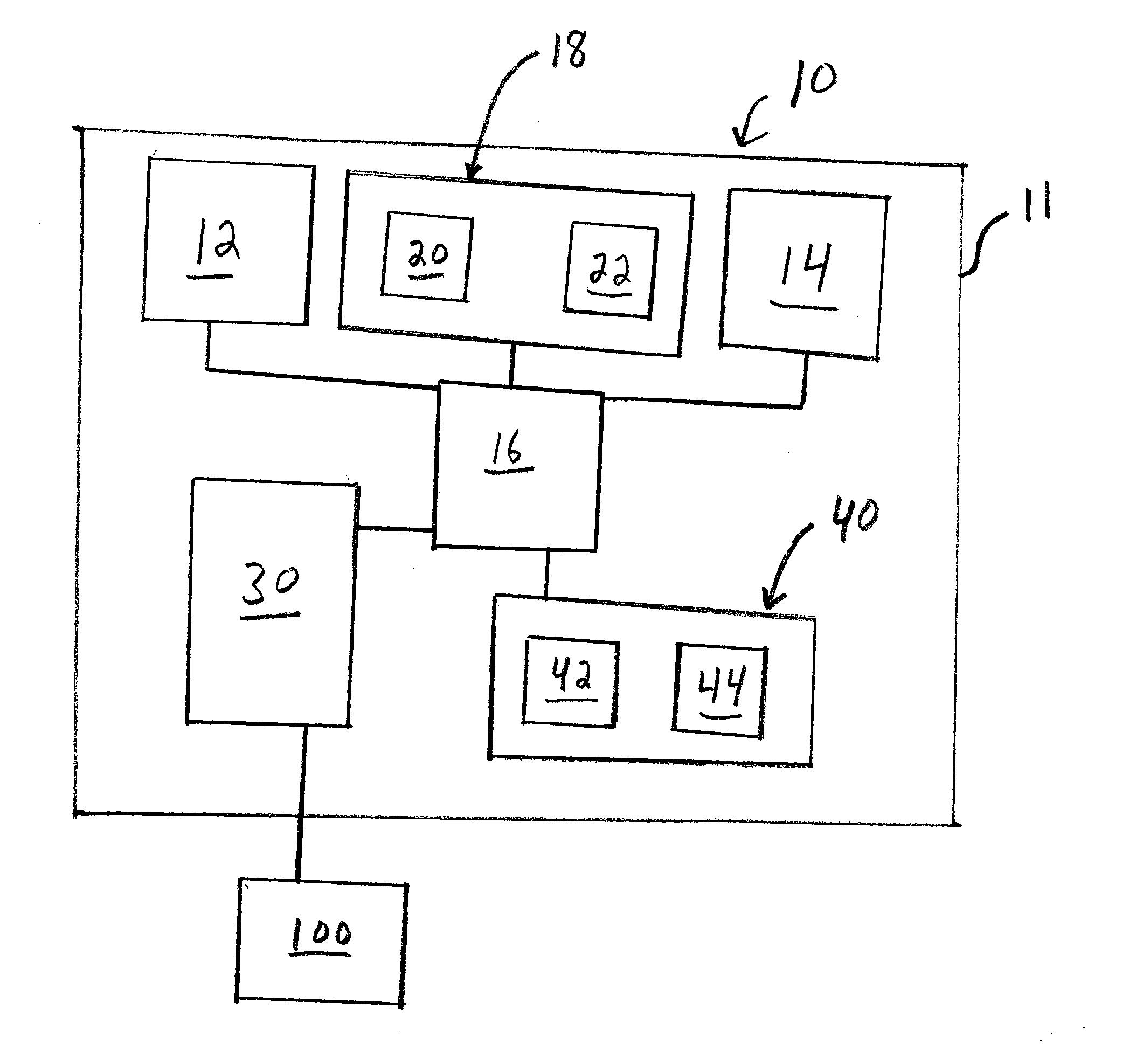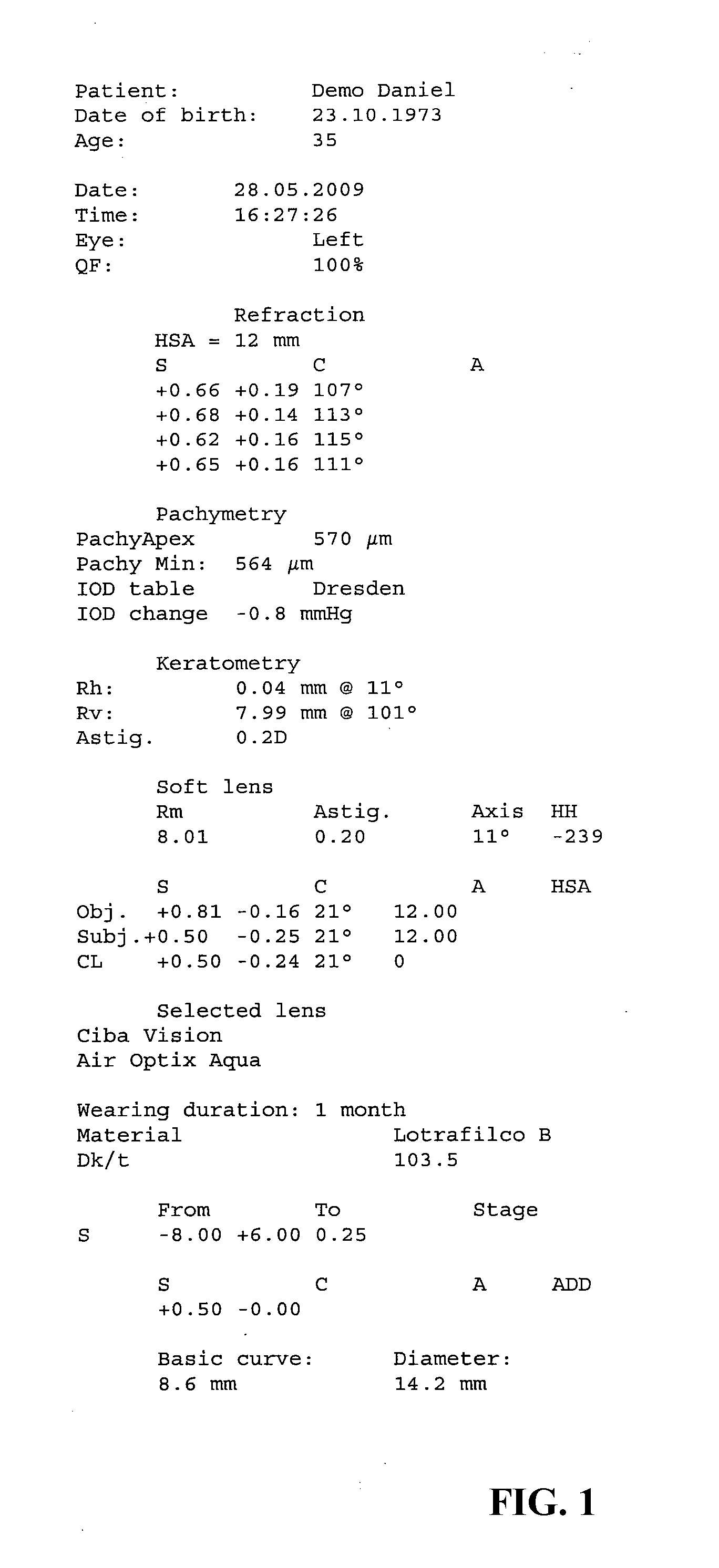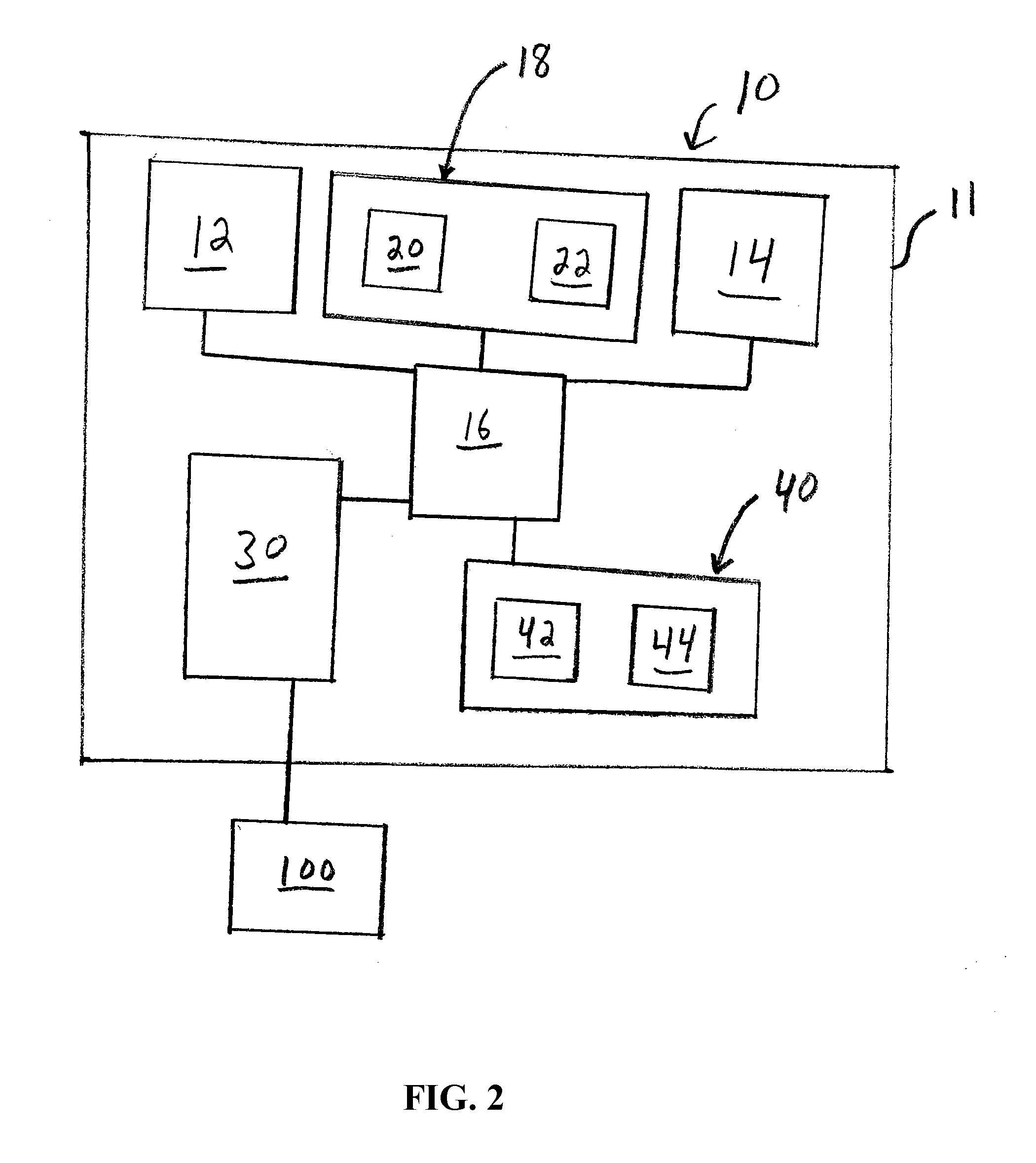Method of determining a contact lens
a technology of contact lens and determining method, which is applied in the field of determining and selecting method of contact lens, can solve the problem that the process of calculating and selecting suitable contact lens takes up a comparatively large amount of tim
- Summary
- Abstract
- Description
- Claims
- Application Information
AI Technical Summary
Benefits of technology
Problems solved by technology
Method used
Image
Examples
Embodiment Construction
[0034]As described above in the summary of the invention, the determined measurements and selected contact lens are the product of a method of determining and selecting a contact lens using an opthalmological device for examining the eyes, wherein the opthalmological device includes a keratometer and an autorefractometer as well as means of dataprocessing, whereby the refractive power of an eye and the topography of a cornea are determined using the autorefractometer and the keratometer, respectively, whereby refraction data describing the refraction of the eye to be examined are obtained using the autorefractometer, whereby topographic data describing the topography of the cornea of the eye are obtained using the keratometer, wherein the method includes the steps of: (a) calculating, on the basis of the obtained refraction and topography data contact lens data, and (b) selecting a contact lens from a database of the opthalmological device. In accordance with the present invention, ...
PUM
 Login to View More
Login to View More Abstract
Description
Claims
Application Information
 Login to View More
Login to View More - R&D
- Intellectual Property
- Life Sciences
- Materials
- Tech Scout
- Unparalleled Data Quality
- Higher Quality Content
- 60% Fewer Hallucinations
Browse by: Latest US Patents, China's latest patents, Technical Efficacy Thesaurus, Application Domain, Technology Topic, Popular Technical Reports.
© 2025 PatSnap. All rights reserved.Legal|Privacy policy|Modern Slavery Act Transparency Statement|Sitemap|About US| Contact US: help@patsnap.com



